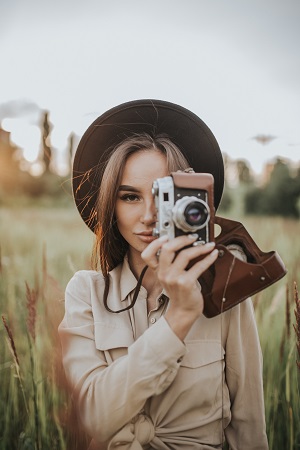When it comes to photography, comfort and convenience play a pivotal role, especially during long shooting sessions. Among the key considerations is the choice between a shoulder camera strap and a neck camera strap for carrying your camera.
Both options have their own merits, but which one is better suited for extended periods of photography? Let’s explore the advantages and disadvantages of each to help you make an informed decision.

Shoulder Camera Strap
A shoulder camera strap, also known as a sling strap, is worn diagonally across the body, allowing the camera to hang at your hip. This configuration offers several benefits for prolonged shooting
Weight Distribution
One of the major advantages of a shoulder camera strap is its ability to distribute the weight of the camera evenly across your torso. This can significantly alleviate the strain on your neck and shoulder, reducing the risk of fatigue and discomfort during extended sessions.
Quick Access
With a shoulder camera strap, your camera is easily accessible by simply sliding it upward to your eye level. This feature is particularly handy for street photographers, event shooters, and anyone who needs to capture moments swiftly.
Hands-Free
A shoulder camera strap keeps your hands free, enabling you to interact with your surroundings, adjust settings, or even carry additional gear without having to hold the camera at all times.
Neck Camera Strap
The traditional neck camera strap is worn around the neck, allowing the camera to hang close to your chest. While it has been a standard choice for many photographers, it may have limitations during extended shoots:
Pressure on the Neck
The main concern with a neck camera strap is the pressure it places on your neck. Over time, the weight of the camera can cause strain, leading to discomfort and potentially pain during long sessions.
Limited Movement
The neck camera strap may restrict your movements more compared to a shoulder camera strap. This could be a concern for photographers who require greater mobility or frequently switch between handheld and tripod shooting.
Reduced Weight Distribution
The weight of the camera is concentrated on a smaller area of your body with a neck camera strap, which could lead to greater fatigue over time.
Choosing the Right Strap
The decision between a shoulder camera strap and a neck camera strap largely depends on your shooting style and preferences:
If you often engage in fast-paced photography, need quick access to your camera, and want even weight distribution, a shoulder camera strap is likely the better option.
On the other hand, if you prefer a more traditional setup, frequently switch between handheld and tripod shooting, and can manage the pressure on your neck, a neck camera strap might suffice.

Conclusion
Ultimately, the choice between a shoulder camera strap and a neck camera strap comes down to your comfort, shooting style, and how you intend to use your camera. If prolonged photography sessions are a regular part of your routine, a shoulder camera strap’s superior weight distribution and hands-free convenience could make it the more suitable choice.
However, if you value the familiarity and simplicity of a neck camera strap, consider taking breaks to alleviate any discomfort during longer shoots. Remember, a comfortable strap contributes to a more enjoyable and productive photography experience, regardless of your chosen style.
 Abraham
Abraham